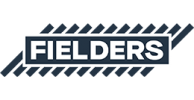In this video, from Compass 2022 presented by COLORBOND® steel, four experts share their knowledge and experience in the field of energy efficiency and roofing. They discuss Urban Heat Islands (UHIs) and the mitigation of urban heat, including reducing the intensity of UHIs via cool roofs. Watch the video to find out about the research, the science, sustainability rating systems and a residential case study.
The Research
Mat Santamouris is the Anita Lawrence Professor of High Performance Architecture at the University of New South Wales. He shares his work through High Performance Architecture to improve the environmental quality of the built environment and especially of our cities and buildings. A key area of Professor Santamouris’ work is the development of mitigation technologies to decrease the temperature of urban areas and he has studied the potential of cool roofs in Australia.
According to Professor Santamouris “Urban Heat Islands are the most documented phenomenon of climatic change. In Australian cities the temperature has increased between 5 to 10 degrees. This has a tremendous impact on the energy consumption of buildings and thermal comfort.”
Professor Santamouris explains that cool roofs can help reduce the intensity of Urban heat Islands, as well as help maintain thermal comfort which can minimise energy demand in buildings.
“Cool roofs and mitigation technologies may help to decrease the energy consumption of buildings for 2 reasons: first because it decreases the ambient temperature by 3 or 4 degrees, so we need much less cooling. At the same time because they protect the envelope of the buildings,” he says.
His research found the benefit of cool roofs for the residential sector in Australia is “very high”. Professor Santamouris’ study has demonstrated that cool roofs (materials of light colour which reduce the amount of solar radiation absorbed) may have a decrease on cooling energy demand between 15-50%. For example, “for the northern cities (Darwin, Brisbane and Sydney) we may have a decrease of energy consumption of up to 40 to 50%,” he says.
The Standards
Elham Monavari is the Senior Manager for Green Star Operations Transformation at the Green Building Council of Australia (GBCA). Through the Future Homes program, the GBCA is developing a Green Star Homes Standard to ‘assess the health, resilience and energy efficiency of our homes'.
The Future Homes Program is built on three core pillars – Advocate, Educate, and Rate – and Monavari hopes the plan will be a best practice standard for new homes. She explains that the GBCA is working with industry and volume home builders to deliver more energy efficient homes, and importantly developing a rating tool “which is a common standard that is able to be applied nationally.”
“The Urban Heat or Heat Resilience credit within the Green Star Homes Standard is really looking at ensuring that the homes are not contributing to the Urban Heat Island effect and it’s doing that in two ways - Firstly, by ensuring that the homes, like the roof for example, has a high reflectivity so it’s actually reflecting heat off and then secondly, by looking at how this can work in contribution with more greenery,” says Monavari.
According to Monavari there is an increased interest from consumers for sustainability for homes and “having cool roofs on an individual home will make a big difference…, but if you’re thinking more broadly at a community scale as well – having multiple cool roofs across a neighbourhood, coupled with using things like vegetation as well, will have a cooling effect across suburbs which can make a big impact to people’s lives.”
The Science
Jamie Adams is a Building Science Specialist at BlueScope.
BlueScope has conducted extensive testing both in their NATA certified lab and at highly exposed field sites near Wollongong and Rockhampton. Adams shares how BlueScope is continually developing COLORBOND® steel to ensure its durability and its aesthetics.
This innovation is highlighted through the recent addition of two new lighter colours to the core COLORBOND® steel palette (Dover White™ and Southerly®), ensuring that BlueScope now offers an even greater range of paler colour options.
“Over the decades, our core COLORBOND® steel palette has evolved to offer a larger choice of lighter colours. This has been in line with our understanding of the importance that lower solar absorptance roofing products can have on the energy efficiency of buildings,” says Adams.
Further, Adams explains the role of COLORBOND® steel’s Thermatech® technology to increase the solar reflectance properties of COLORBOND® steel and to help keep buildings cooler in the daytime*. Thermatech® technology is available in each colour in the COLORBOND® steel core roofing and walling palette (in the Classic and Matt finish), including darker colours, with the exception of Night Sky®.
In practice
The final speaker is Amy Hogan, Head of Sustainability at Stockland. Stockland is one of Australia’s largest diversified property companies and according to Hogan “the breadth and scale of our organisation has enormous opportunity for us to create really positive impact.”. In this video she shares details of how Stockland has accelerated its net zero commitment and provides two case-study examples.
Stockland recently conducted an Urban Heat Island study on their Aura community on the Sunshine Coast in Queensland. The study revealed a 1.5 to 2.0 degree difference in land surface temperature at Aura in comparison to a neighbouring estate. They attributed this to several things including “tree canopy and cool roof and light-coloured roof usage,” says Hogan.
Waterlea is a Stockland masterplan community in Melbourne, Victoria. It’s a 6 Star Green Star Community and Hogan outlines the results of the modelling on the Green Star home they sold at Waterlea.
“It’s estimated to save 113% of greenhouse gas emissions compared to our minimum baseline which is super exciting. This means that it’s a highly efficient asset and there are reasons for that – one of those is the provision of the cool roof which we’ve introduced within that home,” she says.
Hogan reflects that they’re seeing a lot of momentum with Stockland’s builder partners. She concludes that cool roofs “certainly support energy efficiency outcomes through the thermal design of the home, but they also support Urban Heat lsland impacts across the broader community.”
To learn more, please watch the Compass 2022 video, Energy Efficiency and Roofing, presented by COLORBOND® steel and featuring Mat Santamouris, Elham Monavari, Jamie Adams and Amy Hogan.
See more videos from Compass 2022
- Penguin Parade Visitors Centre - Scott Balmforth (Terroir)
- Cradle Mountain Visitor Centre - Environmentally Conscious Design
- Delivering Responsible Design - Tone Wheeler
- Sustainability and Climate Action at BlueScope
- Bilya Koort Boodja Centre for Noongar Culture and Environmental Knowledge - Community Conscious Design
- Social and Affordable Design - Melissa Bright (Studio Bright)
Other resources:
- BlueScope’s STB2 – Sustainability Technical Bulletin – Urban Heat Islands and their Mitigation
- Explore our cool roofing resources including brochures and articles


